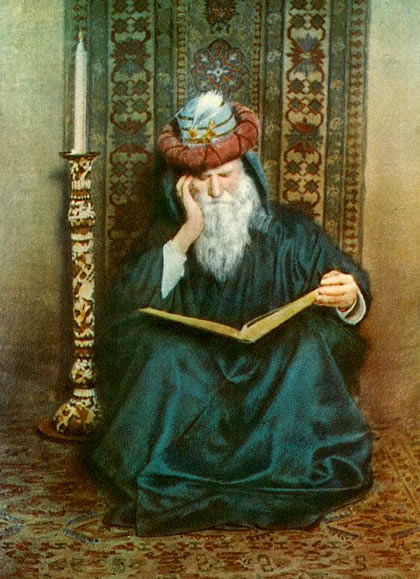 |
| Omar Khayyam |
Omar Khayyam was born in Nishapur, Persia (present-day Iran); his name means “tent maker,” the likely profession of his father. During his lifetime he was known, not as a poet, but as a mathematician and astronomer. He studied philosophy as well as science. As all artists and scientists of the age Omar Khayyam was dependent upon the patronage of the local rulers or persons of wealth for his livelihood.
As a young man he worked in Samarkand under the patronage of the Seljuk ruler, Malik Shah, during which time he wrote the Treatise on Demonstration of Problems of Algebra. The treatise was a groundbreaking mathematical work; he also listed astronomical tables and, with other scientists, worked to reform the calendar.
After the death of Malik Shah and a change in political fortunes, Omar Khayyam moved to the great center of Islamic scientific study at Merv (in present-day Turkmenistan), where he wrote critical analyses of Greek astronomical and mathematical thought. He also traveled to Mecca and Baghdad, other centers for scientific thought. In his old age he moved back to Nishapur, where he died in 1131.
  |
In the west Omar Khayyam’s Rubaiyat, a series of almost 600 rhymed four-line quatrains, was popularized by Edward Fitzgerald’s 1859 translation. Fitzgerald took extensive liberties with the text and it is thought the Omar Khayyam probably wrote only about 200 of the quatrains.
The Rubaiyat reflects Omar Khayyam’s romantic as well as pragmatic nature and covers a wide range of topics including love and death. The poem takes an open view to sensuality, wine, women, and song with verses like
Whether at Naishapur or Babylon,Omar Khayyam’s liberal views were attacked by more puritanical Muslims, as well as by mystical Persian poets who objected to his pessimism and outlook on life.
Whether the Cup with sweet or bitter run,
The Wine of Life keeps oozing drop by drop,
The Leaves of Life keep falling one by one.